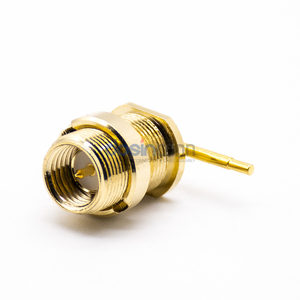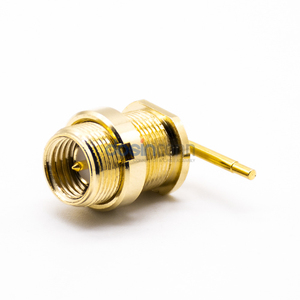
All categories
Featured selections
Trade Assurance
Buyer Central
Help Center
Get the app
Become a supplier

(150 products available)











































Motorola radio antenna connectors come in different types, depending on the specific model. They include;
The mini UHF connector is a compact version of the UHF connector. It is 3/8-24 threaded and has a snap-on coupling mechanism. The mini UHF connector is light, has a low VSWR, and features a crimp-crimp attachment method, making it ideal for many applications. It is commonly used in the radio frequency sector. The mini UHF connector is available in male and female versions.
The MCS connector is also referred to as the MCX connector. It is a snap-on radio frequency connector that is 30% smaller than the SMB connector. The MCS connector has a 50-ohm impedance and can work with miniature semi-rigid, flexible, and semi-flex cables. It is available in a variety of PCB mount, surface mount, and cable plug configurations.
The MCX connector has a snap-on mating design that makes it easy to use. It is 30% smaller than the SMB connector and ideal for applications where space is limited. The MCX connector is light and has a 50-ohm impedance. It is available in straight, right angle, SMD, and PCB configurations.
The MCT connector is a type of RF connector that is similar to the MCX connector but with a 75-ohm impedance. It is suitable for use with digital TV tuners and FM radio. The MCT connector is available in straight, right angle, PCB, and surface mount configurations. It is made of brass and plated with nickel.
The MD connector has a 75-ohm impedance and is suitable for use with digital TV tuners and FM radio. It is available in straight, right angle, PCB, and surface mount configurations. Just like the MCT connector, the MD connector is made of brass and plated with nickel.
Motorola radio antenna connectors are designed to help users connect an external antenna to a Motorola two-way radio. The key features of these connectors include the following:
Motorola radio connectors are made for specific radio models. They are made to fit the radio's antenna port and the external antenna port. When shopping for the connector, it is important to ensure it is compatible with the radio model. Compatible connectors provide a secure and tight connection between the radio and the antenna. They help to reduce signal loss and improve radio performance.
Most radio antenna connectors are designed for outdoor use. They can withstand harsh weather conditions. They have waterproof seals and covers that protect the connection points from moisture, rain, and snow. A weatherproof connector can be used with an external antenna for outdoor activities like hiking, camping, or construction work.
Some connectors have gold-plated contacts. Gold does not corrode or tarnish. It provides a reliable and low-resistance connection between the radio and the antenna. Gold-plated connectors have less signal loss and can transfer signals over long distances.
Motorola connectors are made of durable materials. They can withstand frequent use and rough handling. Some connectors have a rugged design that can resist damage from impact, drops, and vibration.
The connectors are easy to use and install. Users can connect or disconnect the antenna from the radio quickly. Some connectors have a twist-on design that allows users to tighten or loosen the connection by hand.
Most connectors are small and portable. They will not add extra weight to the radio. Users can carry the connectors in their pocket or backpack when traveling. The connector allows users to connect a Motorola radio to an external antenna. This can help to improve the radio's signal range and performance. For example, a portable radio may lose signal in a building or hilly area. But, when connected to an external antenna, it can receive and transmit signals over a longer distance.
Motorola radio antenna connectors have a wide range of applications in many industries. Here are some scenarios where they are used.
Manufacturing plants: In large factories, production might take place in several buildings or floors. Workers in different areas need to communicate. An antenna system with Motorola radio connectors boosts radio signal strength. This ensures that the radios work well even in remote parts of the plant.
Construction sites: Cranes are common at construction sites. They move heavy objects up and down during construction. For safe operations, crane operators must communicate with other workers. Motorola two-way radios use an antenna system to ensure good communication between the ground crew and crane operators.
Mining industry: The mining industry uses Motorola radio connectors to monitor work environments. Mines are usually deep underground, and natural tunnels connect different parts of the mine. In such cases, workers use radios to communicate. Some mines also use robotic miners. These miners are controlled with the help of radio signals. A good antenna system ensures reliable communication between the mine workers and the robotic miners.
Public safety: Firefighters, police officers, and paramedics use Motorola radio connectors to communicate. In emergency situations, they need to be sure that their radios will work. An antenna system improves radio frequency coverage. Radio signals remain strong, even in areas with tall buildings or other obstacles.
Marine industry: Boats and ships use two-way radios for communication. In rough seas, the boat might rock back and forth. It is important to have a good antenna system that keeps the radio signal strong.
Power plants: When the power goes out, emergency workers need to communicate. A good antenna system ensures that the radio signal remains strong, even during a blackout.
Before making a purchase, ensure that the connector is compatible with the radio model. This is essential to ensure proper fit and functionality.
Look for connectors made from high-quality and durable materials. This is because they need to withstand frequent use and environmental conditions without wearing out.
If the connector will be exposed to moisture or outdoor environments, consider getting a waterproof option. This will prevent water damage and ensure long-term functionality.
Depending on the specific antenna and radio model, choose the correct connector type. This will ensure a secure and proper connection for optimal performance.
Consider the Gain of the antenna. This is because higher gain antennas offer better transmission and reception capabilities. This is ideal for applications that require long-range communication.
It is important to buy a connector from a reputable brand. This is because they are more likely to have higher quality and more reliable products. Such brands often provide better customer service and support in case of an issue.
Consider the cost of the connector. Although cost is an essential factor, it should not be the only one considered. It is important to strike a balance between price and other factors like quality, compatibility, and features.
Q1) What type of connector does a Motorola radio use?
A1) Motorola radios use a RP-TNC or RP-BNC connector for their antenna. However, it's essential to check the radio's specifications, as different models may use different connectors.
Q2) Can I connect an external antenna to my Motorola radio?
A2) Yes, it is possible to connect an external antenna to a Motorola radio, but it depends on the model. Some Motorola radios have a connector for an external antenna, while others may require modification by a professional to add an external antenna connector. Before attempting to connect an external antenna, users should carefully read the radio's manual and consult a professional if needed.
Q3) How do I choose the right antenna for my Motorola radio?
A3) When choosing an antenna for a Motorola radio, one must consider the frequency range of the radio, as different antennas are designed for different frequencies. Additionally, take into account the type of activities or environment in which the radio will be used, as this will determine whether a portable, vehicle, or base station antenna is needed. Consideration of the range one needs to communicate over is also essential in making the right choice.
Q4) How can I improve my Motorola radio's range?
A4) There are several ways to improve a Motorola radio's range. Using a higher-gain antenna can increase signal strength, while placing the antenna as high as possible and in a clear line of sight will help in the signal's transmission. If using a mobile radio, ensure the vehicle is parked in a location with minimal obstructions around it, and if operating a base station radio, consider using a repeater to extend the coverage area.